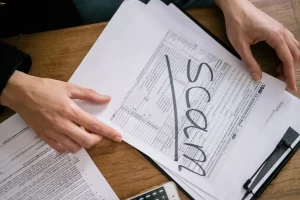- Economy & Budget
How to Save for a House Down Payment Faster

Buying a home is one of the biggest financial goals for many people, but saving for a down payment can feel overwhelming. The good news is that with the right strategy, you can reach your goal faster and become a homeowner sooner.
In this guide, we’ll cover how much you need for a down payment, smart ways to save, and strategies to speed up the process.
1. Determine How Much You Need for a Down Payment
Before you start saving, you need to know how much you’ll need. The amount depends on:
✔ The price of the home you want to buy
✔ The percentage required for a down payment (varies by loan type)
✔ Your credit score and loan eligibility
📌 Common Down Payment Percentages:
- Conventional Loan: 5% – 20%
- FHA Loan (First-Time Buyers): 3.5%
- VA Loan (Military): 0%
- USDA Loan (Rural Homes): 0%
🚀 Example:
If you’re buying a $300,000 home, your down payment could be:
- 3.5% FHA Loan: $10,500
- 5% Conventional Loan: $15,000
- 20% Conventional Loan: $60,000 (to avoid private mortgage insurance – PMI)
💡 Tip: The more you save for a down payment, the lower your monthly mortgage payments will be.
2. Set a Realistic Savings Goal and Timeline
Once you know how much you need, break it into manageable savings goals.
✅ Steps to Set Your Goal:
- Decide on your target amount.
- Set a deadline (e.g., save $20,000 in 3 years).
- Divide your savings goal into monthly contributions.
🚀 Example: If you need $20,000 in 3 years, you must save:
✔ $6,667 per year
✔ $556 per month
✔ $139 per week
💡 Tip: Open a separate high-yield savings account for your house fund to avoid spending it.
3. Reduce Unnecessary Expenses to Save More
The more you cut back on spending, the faster you can save for your down payment.
✅ Ways to Reduce Expenses:
✔ Cut back on dining out and make meals at home.
✔ Cancel unused subscriptions (gym, streaming, magazines).
✔ Find cheaper alternatives for phone and internet plans.
✔ Reduce impulse spending—wait 24 hours before buying non-essentials.
🚀 Example: If you save $200 per month by reducing entertainment and shopping, that’s $7,200 in 3 years toward your down payment!
4. Increase Your Income to Speed Up Savings
If you can’t cut expenses much further, consider ways to increase your income.
✅ Ways to Earn More Money:
✔ Start a side hustle (freelancing, tutoring, pet sitting).
✔ Sell unused items (clothes, electronics, furniture).
✔ Ask for a raise or promotion at work.
✔ Take on overtime or part-time jobs.
🚀 Example: If you earn an extra $300 per month, you’ll add $10,800 to your savings in 3 years!
5. Automate Your Savings
Automating your savings makes it easier to stay consistent and prevents you from spending the money elsewhere.
✅ How to Automate Savings:
✔ Set up an automatic transfer from your paycheck to your house fund.
✔ Use apps like Acorns, Digit, or Qapital to save spare change.
✔ Round up purchases to save small amounts automatically.
🚀 Example: If you save $5 per day automatically, you’ll have $5,475 in 3 years!
6. Take Advantage of First-Time Homebuyer Programs
If you’re a first-time buyer, you may qualify for government programs that can reduce your down payment.
✅ Programs to Explore:
✔ FHA Loans – 3.5% down with lower credit score requirements.
✔ VA Loans – 0% down for military members and veterans.
✔ USDA Loans – 0% down for rural and suburban areas.
✔ Down Payment Assistance Programs – Grants or low-interest loans in many states.
💡 Tip: Check with local banks and credit unions for special programs available in your area.
7. Invest Your Savings for Growth
If you have several years before buying a home, consider investing part of your savings to increase your returns.
✅ Where to Invest for Short-Term Growth:
✔ High-yield savings accounts (safe, minimal risk).
✔ Certificates of Deposit (CDs) (fixed return over a period).
✔ Money Market Accounts (higher interest than regular savings).
🚀 Example: If you save $20,000 in a high-yield savings account with 3% interest, you’ll earn an extra $1,200 in 3 years!
💡 Warning: Avoid risky investments like stocks for short-term savings—you could lose money instead of growing it.
8. Avoid Common Mistakes That Slow Down Savings
Many people struggle to save for a down payment because they make costly mistakes.
❌ Using savings for non-essential purchases.
❌ Not researching first-time homebuyer programs.
❌ Not considering closing costs and other home expenses.
❌ Waiting too long to start saving.
🚀 Tip: Stay disciplined and remind yourself of why you’re saving—owning your home will be worth it!
Final Thoughts
Saving for a house down payment may seem challenging, but with a clear plan and smart financial habits, you can reach your goal faster than you think!
✔ Set a clear savings goal and timeline.
✔ Cut unnecessary expenses and boost your income.
✔ Use first-time homebuyer programs to reduce costs.
✔ Invest smartly for short-term growth.
🚀 The sooner you start, the sooner you’ll be holding the keys to your new home!






